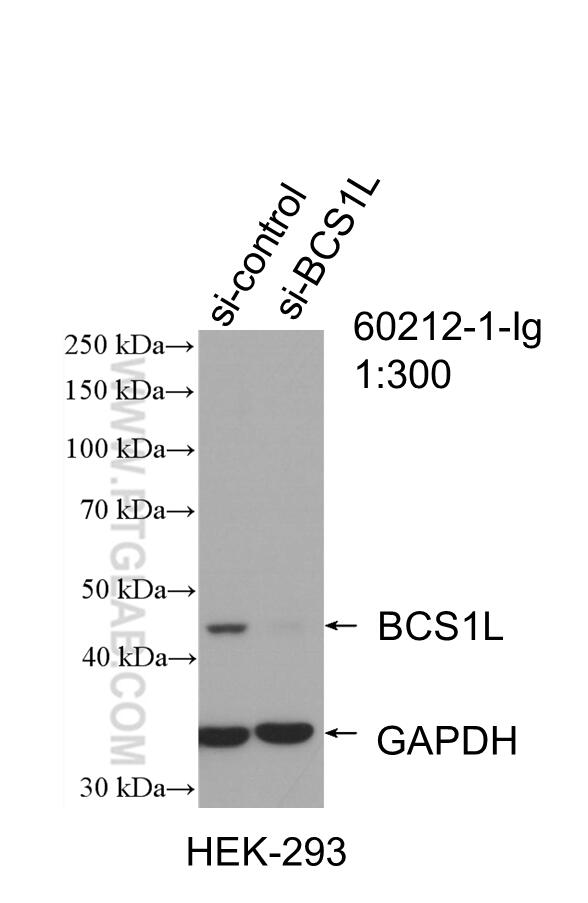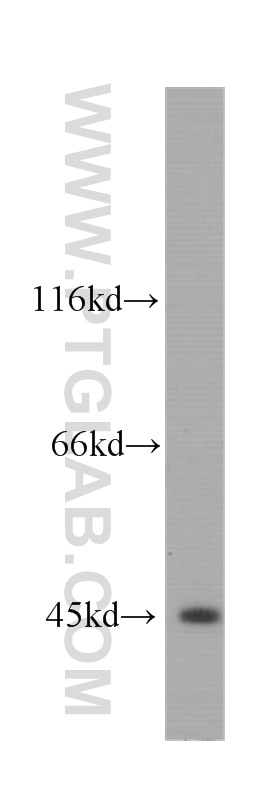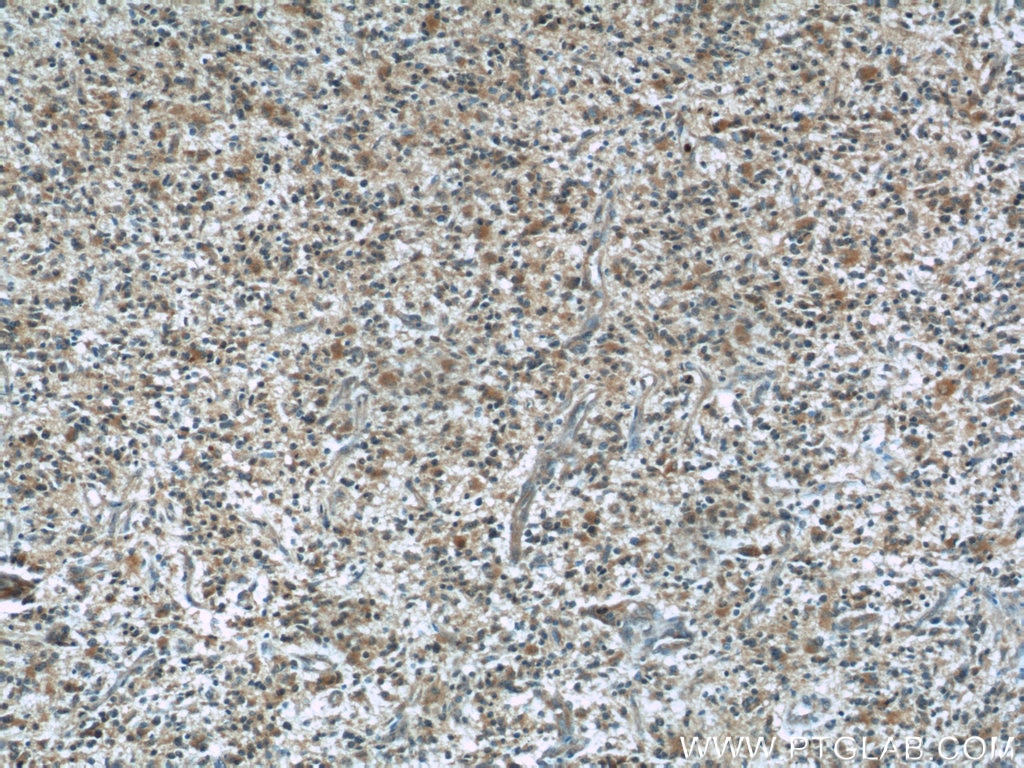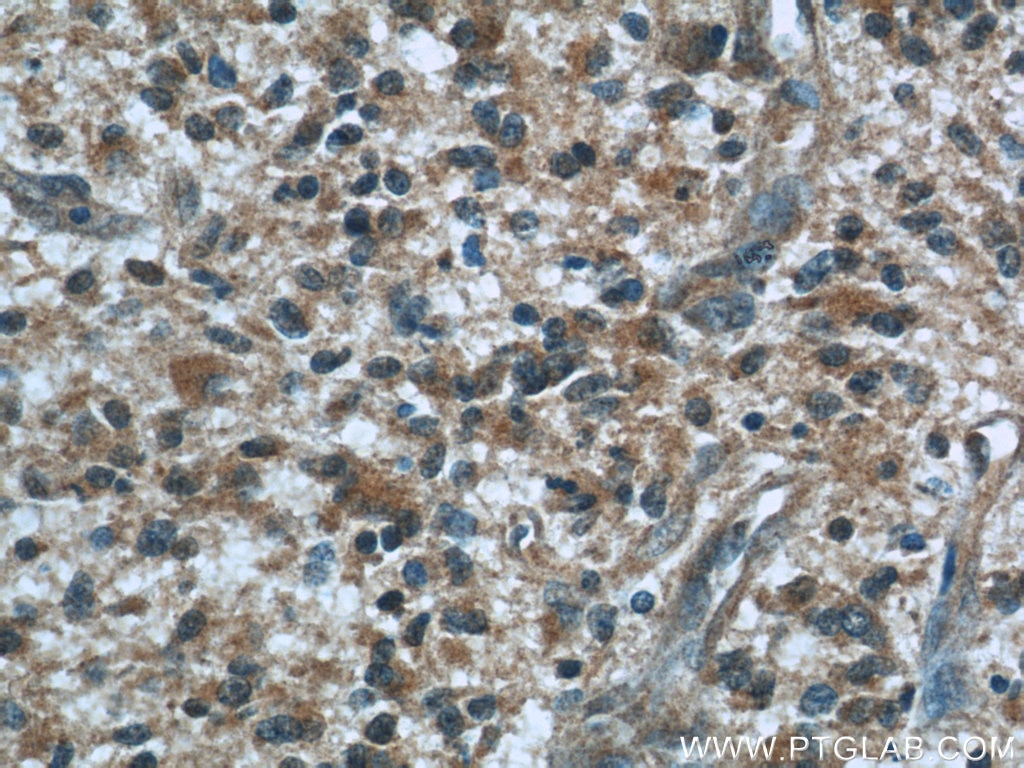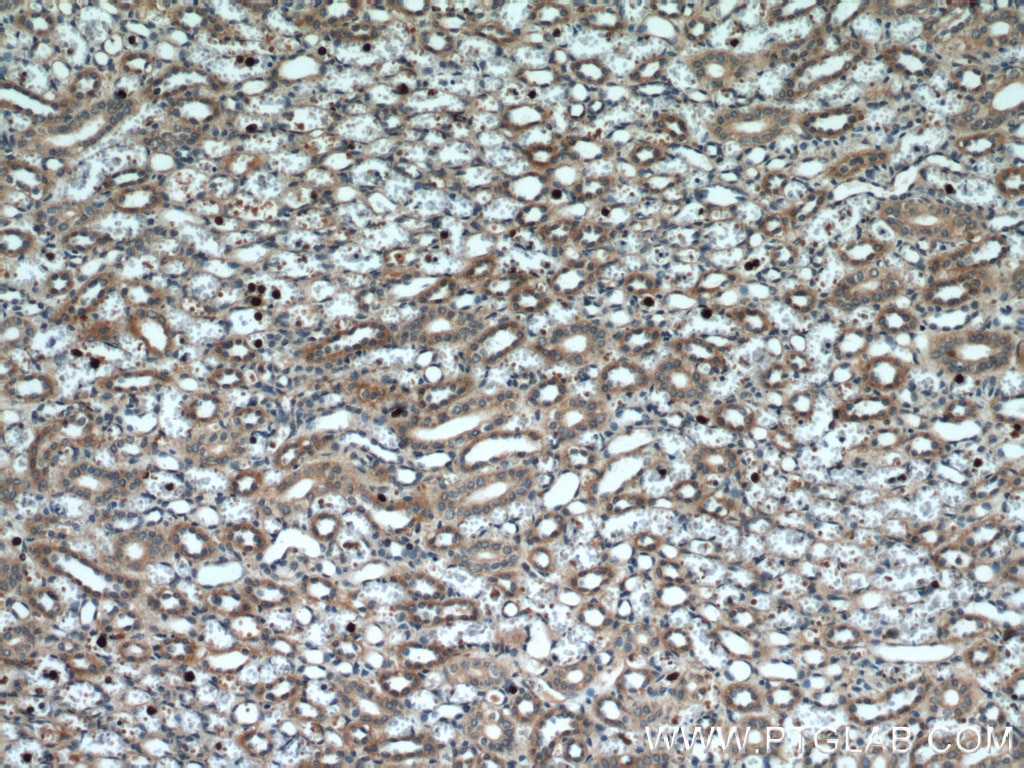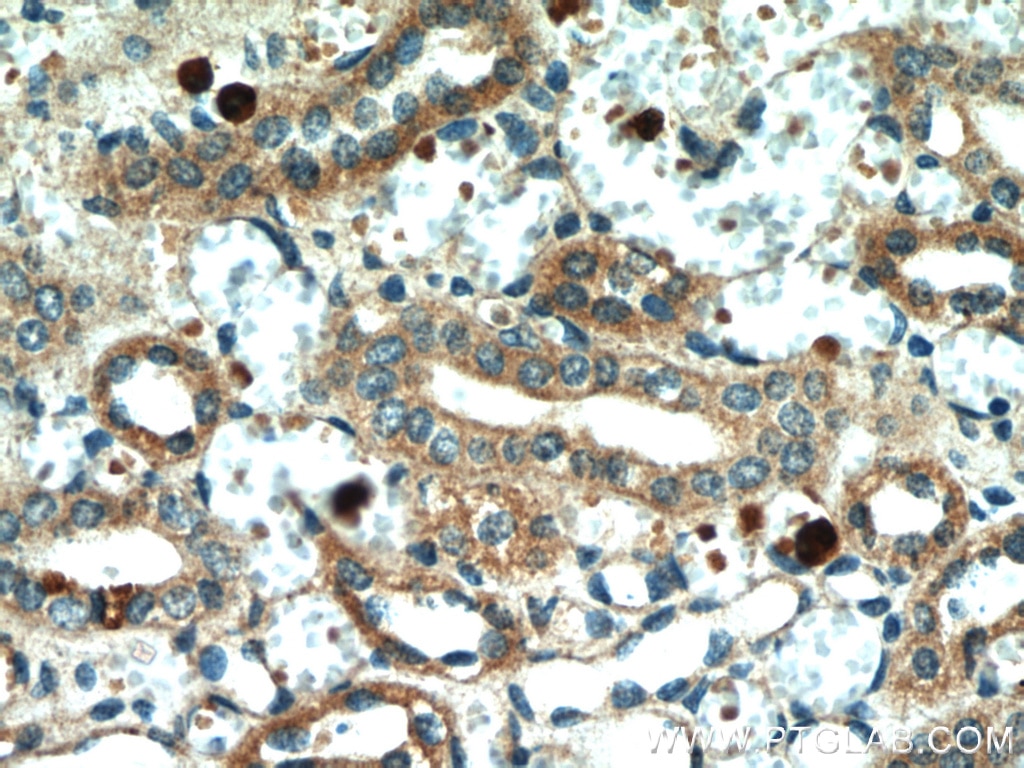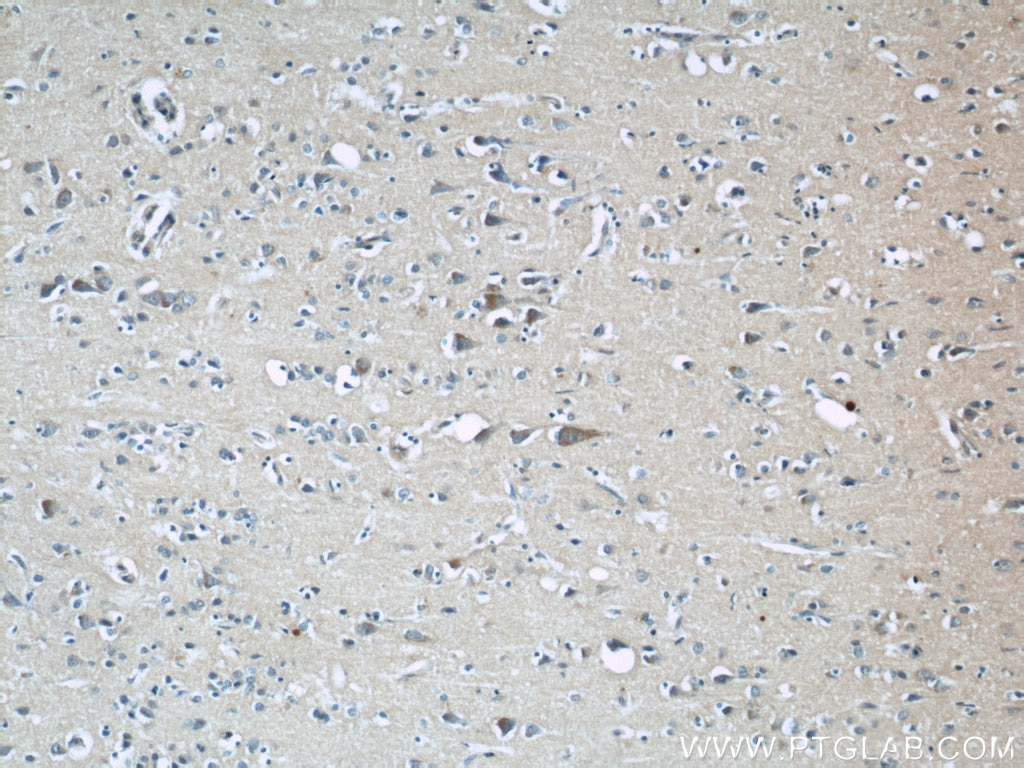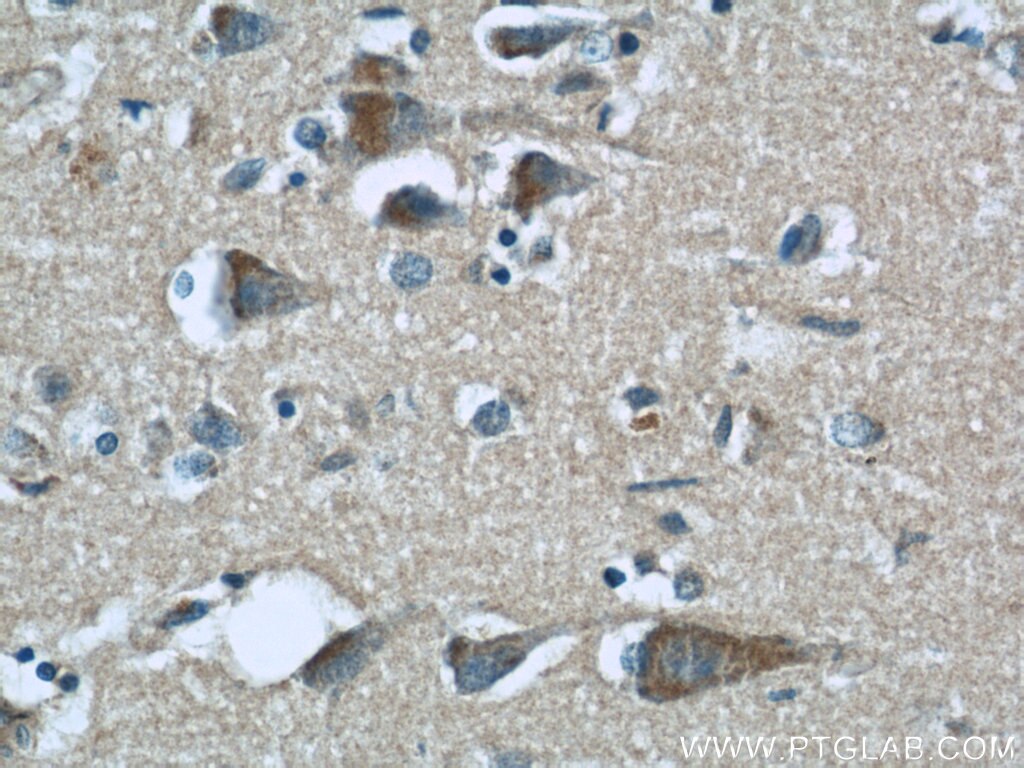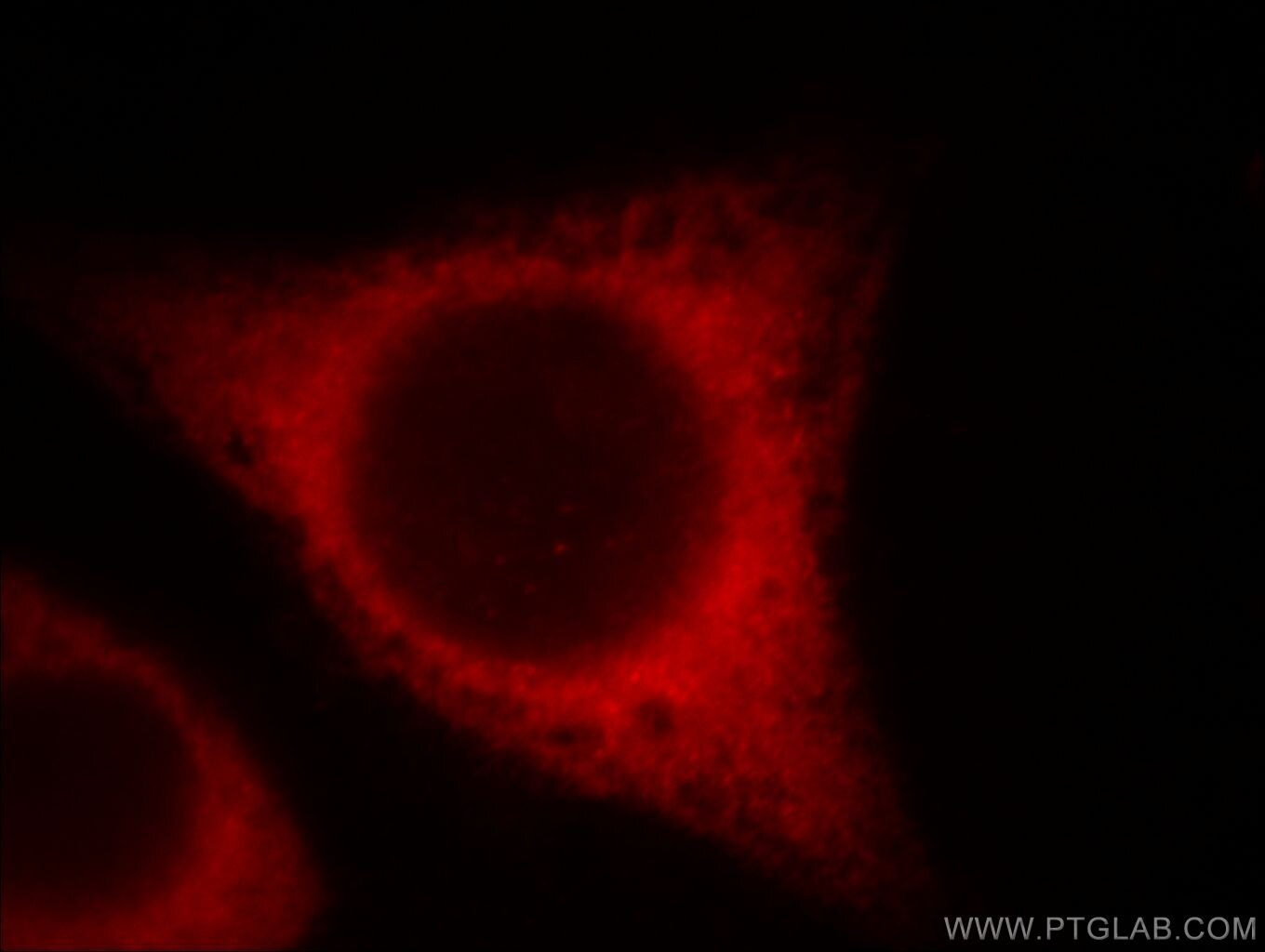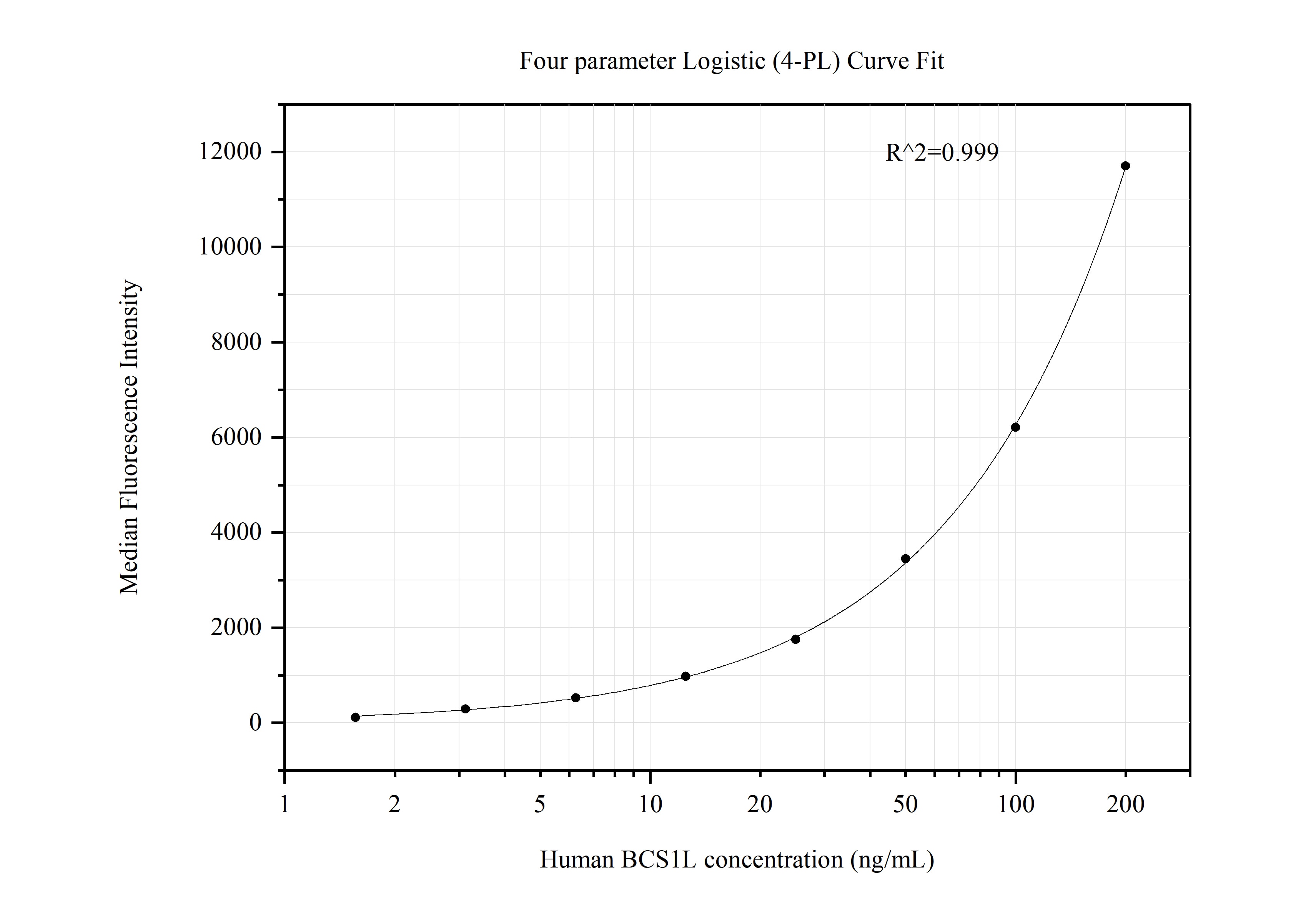Product Information
60212-1-PBS targets BCS1L as part of a matched antibody pair:
MP50678-1: 60212-1-PBS capture and 60212-2-PBS detection (validated in Cytometric bead array)
Unconjugated mouse monoclonal antibody pair in PBS only (BSA and azide free) storage buffer at a concentration of 1 mg/mL, ready for conjugation.
This conjugation ready format makes antibodies ideal for use in many applications including: ELISAs, multiplex assays requiring matched pairs, mass cytometry, and multiplex imaging applications.Antibody use should be optimized by the end user for each application and assay.
| Tested Reactivity | human, mouse |
| Host / Isotype | Mouse / IgG1 |
| Class | Monoclonal |
| Type | Antibody |
| Immunogen |
CatNo: Ag18280 Product name: Recombinant human BCS1L protein Source: e coli.-derived, PET28a Tag: 6*His Domain: 7-182 aa of BC007500 Sequence: ILALKDNPYFGAGFGLVGVGTALALARKGVQLGLVAFRRHYMITLEVPARDRSYAWLLSWLTRHSTRTQHLSVETSYLQHESGRISTKFEFVPSPGNHFIWYRGKWIRVERSREMQMIDLQTGTPWESVTFTALGTDRKVFFNILEEARELALQQEEGKTVMYTAVGSEWRPFGYP Predict reactive species |
| Full Name | BCS1-like (yeast) |
| Calculated Molecular Weight | 48 kDa |
| Observed Molecular Weight | 47 kDa |
| GenBank Accession Number | BC007500 |
| Gene Symbol | BCS1L |
| Gene ID (NCBI) | 617 |
| RRID | AB_11042318 |
| Conjugate | Unconjugated |
| Form | Liquid |
| Purification Method | Protein G purification |
| UNIPROT ID | Q9Y276 |
| Storage Buffer | PBS only, pH 7.3. |
| Storage Conditions | Store at -80°C. |
Background Information
Human BCS1-like (BCS1L), a mitochondrial inner-membrane protein, is a chaperone necessary for the assembly of mitochondrial respiratory chain complex III. Recently studies indicated that the mutations in this protein may cause the GRACILE (growth retardation, aminoaciduria, cholestasis, iron overload, lactacidosis, and early death) syndrome, a recessively inherited lethal disease characterized by fetal growth retardation, lactic acidosis, aminoaciduria, cholestasis, and abnormalities in iron metabolism.

